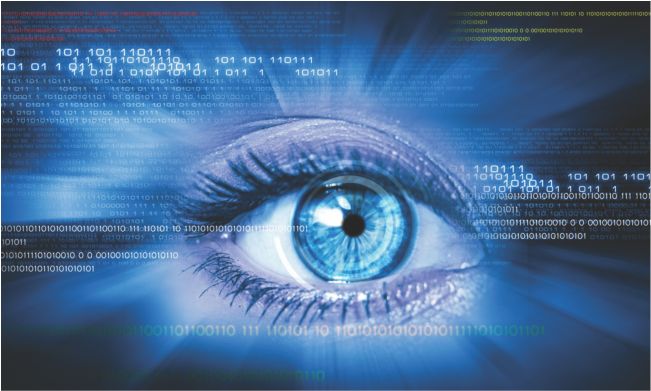Human vision is best for qualitative interpretation of a complex and unstructured scene while machine vision excels at quantitative measurement of a structured scene because of its speed, accuracy and repeatability.
Machine Vision: Machine Vision (MV) is machine ability to acquire the human visual sense and judgment capability with a digital sensors protected inside industrial cameras and a computer hardware with software can process, analyze, and measure various characteristics for decision making. Machine vision is also known by a name Industrial vision or Vision machine. Machine Vision systems can be thought of as machines with eyes that can perform certain task like identification, inspection and communicate critical information to eliminate costly errors, improve productivity and enhance customer satisfaction through the consistent delivery of quality products. Primarily used for online inspection, vision systems can perform complex or mundane repetitive tasks at high speed with high accuracy and high consistency.
Sensors: Machine vision system comes in all shape and sizes according to the application areas. Basic building blocks of Machine vision system are lighting, lens, image sensor, vision processing and communications. Sensors play a crucial role in this technology. Sensors employed in machine vision are particularly helpful when multiple features must be inspected on the product. There is usually some degree of tolerance for each article. Vision sensors are considerably quicker and more accurate than humans employed for the same task. Sensors or vision sensors have multiple function like Pattern Matching, Shape Detection, Orientation, Object position and counting, sorting, hole counting etc. Vision sensors perform inspections in three basic steps: First, its camera acquires an image of the part. Next, a processor analyzes this image and then determines if the inspection passes or fails — and reports results to the manufacturing line.
Type of sensors used: Sensors can be categorized according to the applicability. Today, almost all sensors in machine vision fall into one of the two categories: Charge-Coupled Device (CCD) and Complementary Metal Oxide Semiconductor (CMOS) imagers.
While talking about general fabrication architectures both CCD and CMOS fall under monolithic fabrication style, which implies fabricating sensor in single piece of silicon.
CCD Sensors and CMOS Sensors: CCD are made through special manufacturing process that allows the conversion of analog light signals into digital pixel which take place in the chip without distortion. This creates high quality sensors that produce excellent images. But, because they require special manufacturing, they are more expensive than their newer CMOS counter parts. CMOS chips use transistors at each pixel to move the charge through traditional wires. This offers flexibility because each pixel is treated individually.
In a CMOS sensor, each pixel has a photoreceptor performing its own charge-to-voltage conversion and typically includes amplifiers, noise-correction, and digitization circuits, enabling the sensor to output digital data directly. The pixels typically don’t store any charge; they simply read how much light is hitting that pixel at a particular moment and read out, progressively from top left to bottom right, line by line while the shutter is open. In a CCD sensor, light enters the photoreceptor and is stored as an electrical charge within the sensor, then converted to voltage, buffered, and sent out as an analog signal when the shutter is closed.








